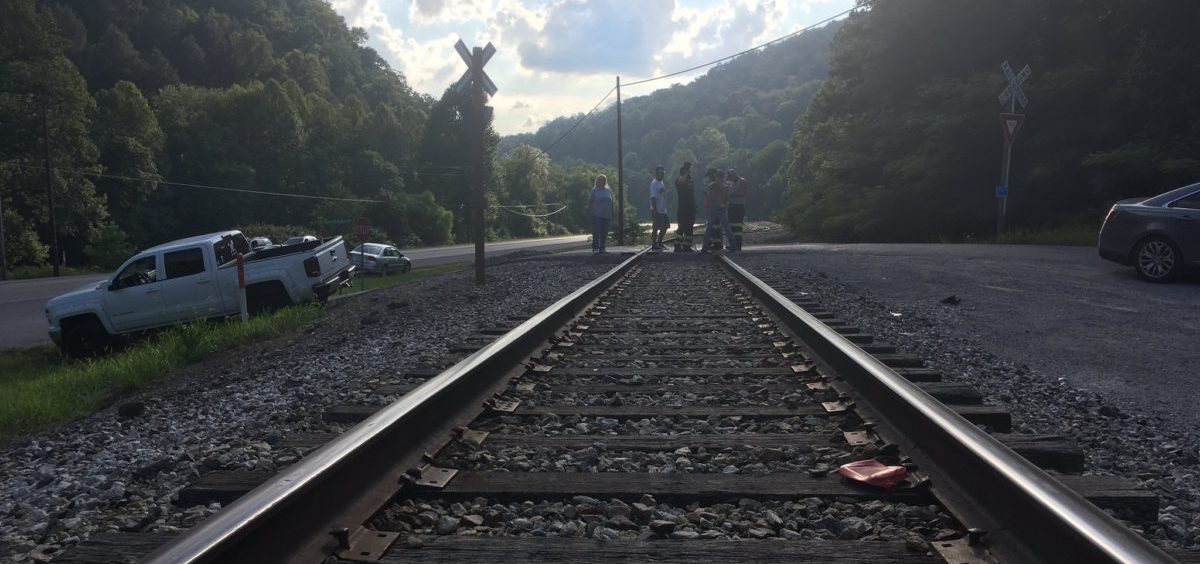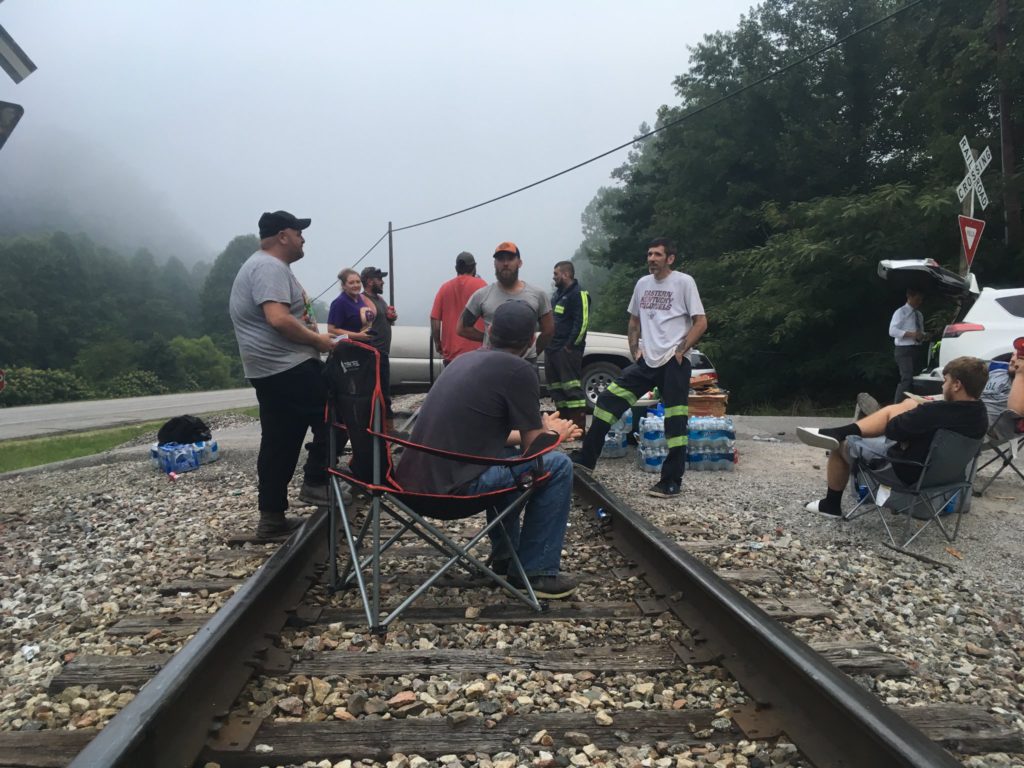News

No Pay, We Stay: A Look Back at the 2019 Protest that Rocked Appalachia
By: Sydney Boles | Ohio Valley ReSource
Posted on:
CUMBERLAND, Ky. (OVR) — It’s a quiet, foggy morning on Highway 119 in Cumberland, Kentucky. A railroad track runs along the highway, and here, Sand Hill Bottom Road crosses the tracks and turns to the right, leaving a rough triangle of gravel spattered with trash.
You can hear crickets chirping, birds twittering, cars passing on 119. A billboard advertises Portal 31, a coaltown tourist attraction.
If you didn’t know any better, you’d think this was just a nondescript intersection in a nondescript bit of highway. But one year ago, this intersection played host to a two-month long protest of a kind that hadn’t been seen in coal country for decades.
When Blackjewel went bankrupt, it left hundreds of coal miners in four states without weeks worth of pay. So for 59 days, coal miners and their loved ones blockaded this railroad track to prevent $1.4 million worth of coal from leaving.
“If they can move this train, they can give us their money,” miner Shane Smith said at the time.
The protest was sometimes monotonous, sometimes raucous.
The federal Department of Labor intervened, arguing the coal had been mined in violation of the Fair Labor Standards Act, and could not be moved until the miners were paid.

The railroad blockade ended on September 26, 2019, with a whimper, not a bang. The last two protesters, miner Chris Rowe and his wife Stacy, cleaned up the last of the protest’s trash, climbed into their truck, and drove away. The miners had not yet been paid back for weeks’ worth of work that were now months behind them, but they had made a point. They had drawn attention to the decline in the coal industry and the painful impact it had on communities that had long relied on the black gold to survive.
Now, after witnessing the industry decline over the course of decades, Ohio Valley coal communities face a more urgent cliff, one caused by the same strand of RNA that is reshaping life around the globe: the novel coronavirus, COVID-19.
The Slow Decline
Coal production has been on the decline in central Appalachia for decades, faced with competition from coal from other regions, as well as cheap fracked gas,.says Hannah Pitt, a senior analyst at the research firm Rhodium Group. As the U.S. produced more of its electricity from natural gas and renewable energy, coal plants were shuttered and coal mines closed.
“A quarter of the U.S. coal fleet has retired since 2005,” Pitt said.
The closures led to a wave of bankruptcies. And with the bankruptcies came layoffs: Just 2,582 coal miners were employed in the eastern Kentucky coalfields in the first quarter of 2020, before the coronavirus-related economic shutdown had taken its full toll.
“Early on in this pandemic — March, April, and even into May — many of our members in the mines were working short weeks, they weren’t working full shifts,” said Phil Smith, a spokesperson for the United Mine Workers of America, the union representing coal miners. “Other mines were just completely furloughed.”
Coal production in eastern Kentucky declined by 39 percent between the first quarter of 2019 and the first quarter of 2020, a trend industry watchers expect to accelerate in the coming months.
“In our scenarios where we look at what happens now that we find ourselves in this pandemic, coal is going to be hit even harder. So, out to 2030, we expect more than 50 percent of coal plants will retire,” Pitt said.
Pam Thomas, a senior fellow at the left-leaning Kentucky Center for Economic Policy, said the bankruptcies and layoffs had further downstream consequences on county budgets.
“With the coal companies withdrawing and a lot of them declaring bankruptcy or just not paying their taxes … I just think some of these counties are not going to be able to make it.”
A Quick Death
Blackjewel wasn’t the only coal company to declare bankruptcy in 2019: Cambrian Coal folded last June, and Murray Energy, a giant in the industry, also folded later the same year.
Now, nearing the anniversary of the Blackjewel protest that rocked Appalachian coal country, Kentucky-based mining company Rhino Resource Partners has also filed for bankruptcy protection.
Rhino was one of several companies that purchased assets from Blackjewel in its bankruptcy.
The trend is part of what University of Chicago assistant professor and coal bankruptcy expert Josh Macey has called “bankruptcy as bailout”: a pattern of misuse of the bankruptcy process in which environmental reclamation costs and miners’ health obligations are loaded onto companies that have no ability to pay them, freeing the original company to continue operating without the burden of those debts.
The industry is also seeking relief from Congress to help it muddle through the market challenges posed by the pandemic. The Ohio Valley ReSource reported in March that the National Mining Association asked Congress for $220 million in relief from taxes that support some coal miners who are disabled by their work in the mines. That relief has not been granted.
Coal companies have, however, received significant federal aid from the Paycheck Protection Program: 51 coal firms in the Ohio Valley alone received as much as $119 million collectively. Rhino received $10 million shortly before it declared bankruptcy.
What’s Left Behind

The intersection of Route 119 and Sand Hill Bottom has no such marker.
Still, traces of the protest remain. By the tracks, blackened rocks mark what might once have been a campfire; on the rusted rail itself linger traces of spray paint that once read “NO PAY WE STAY.”
Reminders linger online, too. There’s an active Facebook group, 4,000 members strong, where former Blackjewel miners and their family members share gripes and victories, and answer one another’s questions.
Pain and anger linger, too. “Myself and my comrades at Blackjewel lost cars, lost homes, lost retirements, and many had to leave here to seek employment,” said Brandon Middleton, a former Blackjewel miner who spent time at the 2019 blockade.

